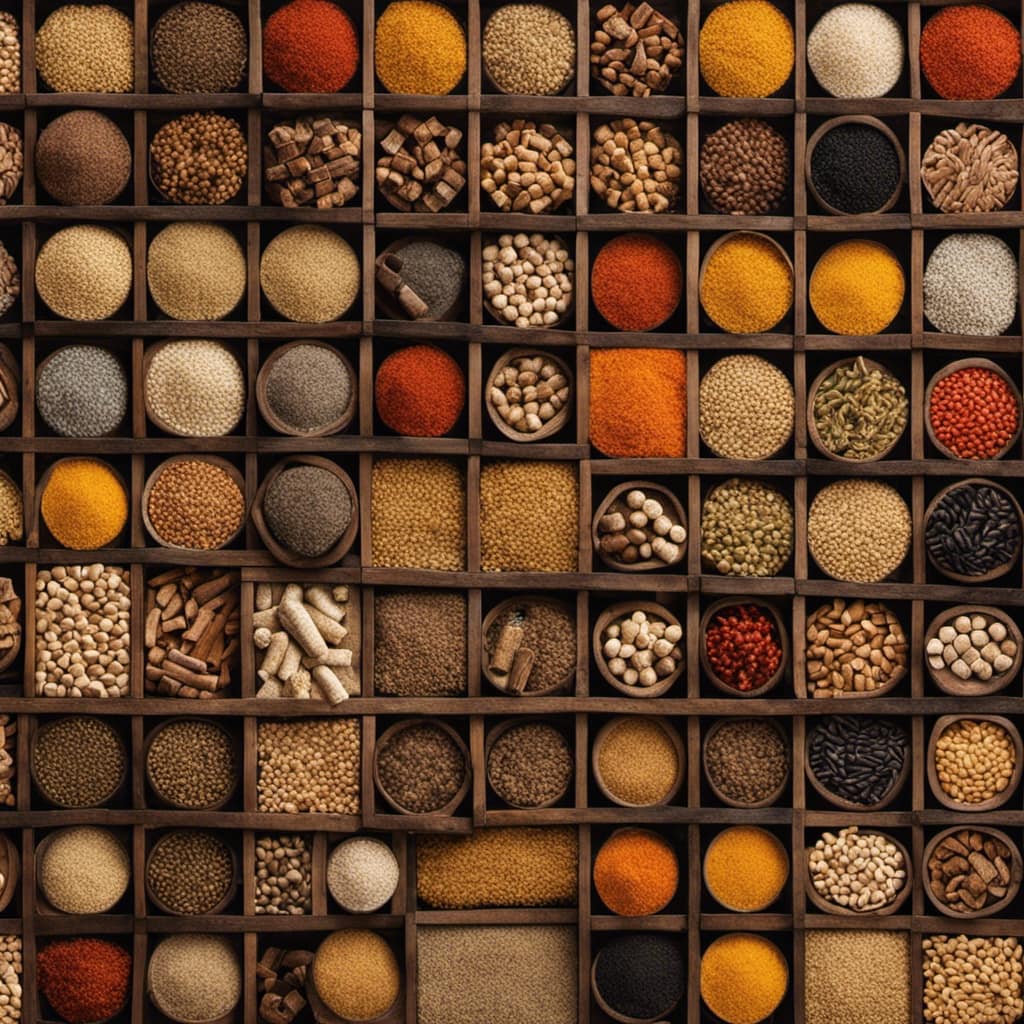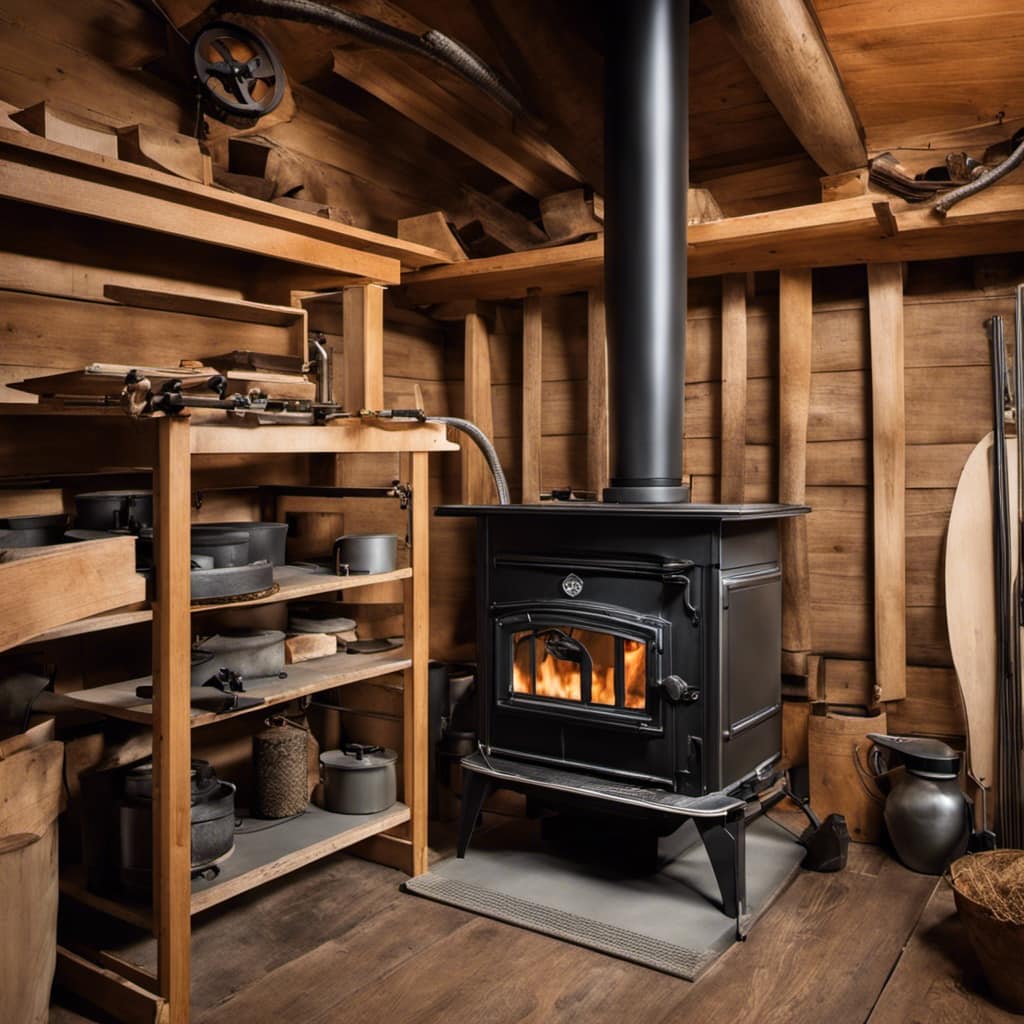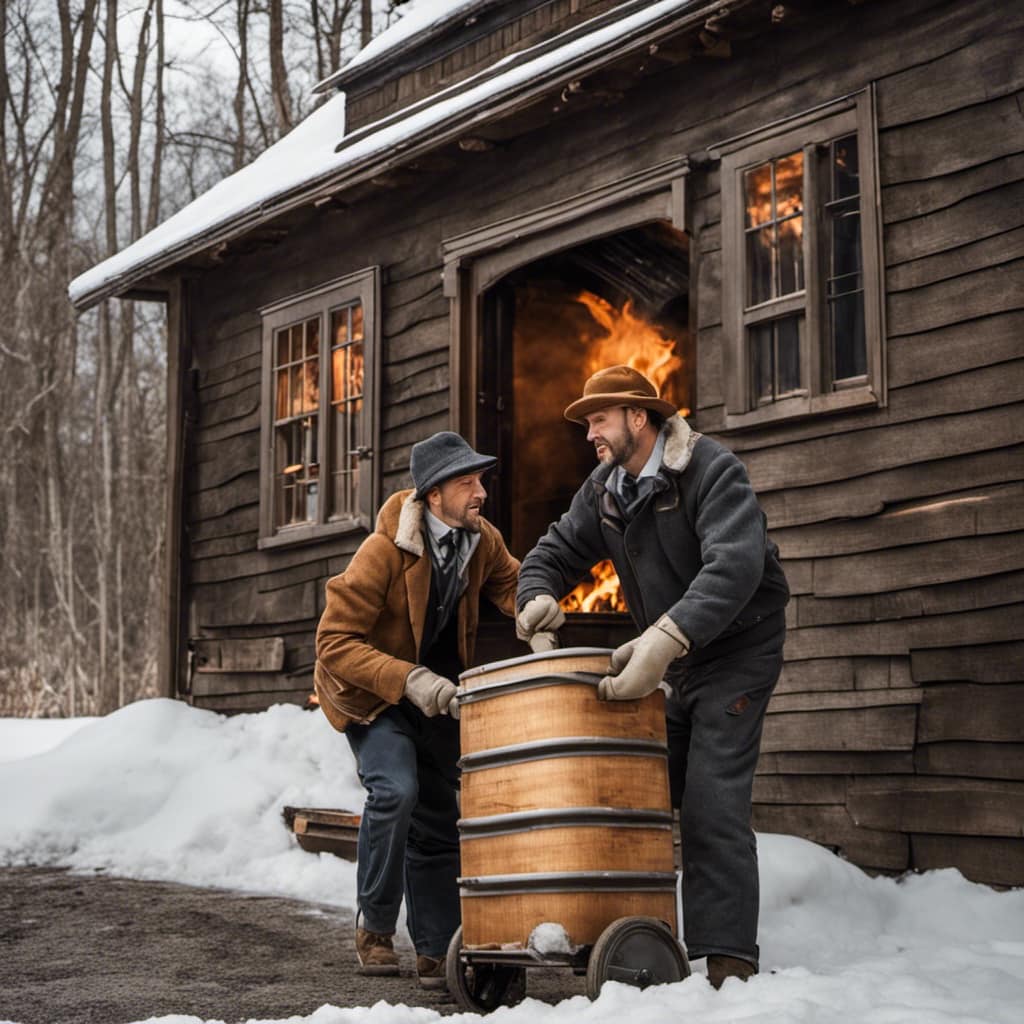I have always cherished the gentle crackling of a wood stove on a cool evening. Watching the flames dance and feeling the warmth fill the house brings a magical feeling.
In this guide, I’ll show you how to harness the power of a wood stove to heat your home efficiently and effectively. From selecting the right wood to properly loading and maintaining your stove, I’ll cover all the essential steps to keep your house warm and toasty all winter long.
Key Takeaways
- Wood stoves provide cozy ambiance and cost-effective heating.
- Select the right wood for optimal heat output, considering factors like moisture content and wood density.
- Properly load and start the wood stove by clearing the area, using kindling and small dry wood or newspaper, and maintaining proper ventilation.
- Maximize heat distribution throughout the home by using ceiling fans, insulating walls/windows/doors, and effectively distributing the wood stove’s heat.
Understanding the Basics of Wood Stove Heating
I really enjoy learning about the basics of wood stove heating. There are numerous benefits to using a wood stove as a source of heat in your home. Not only does it provide a cozy ambiance, but it can also be a cost-effective and sustainable option.
Wood stoves are known for their high heat output and can effectively warm up a room or even an entire house. However, it’s important to take certain safety precautions when using a wood stove. Make sure to properly install and maintain your stove, including regular chimney cleanings. Always use dry, seasoned wood to prevent excessive smoke and creosote buildup. Additionally, it’s crucial to have a carbon monoxide detector in your home to ensure safe indoor air quality.

With these safety measures in place, you can enjoy the warmth and comfort of a wood stove while minimizing any potential risks.
Now, let’s move on to the next section about selecting the right wood for optimal heat output.
Selecting the Right Wood for Optimal Heat Output
To maximize the amount of heat produced, I always make sure to choose the most suitable type of wood for my wood stove. When it comes to selecting the right wood, there are a few factors to consider. First, we have the choice between seasoned and green wood. Seasoned wood, which has been dried for at least six months, is the better option for heating. It burns more efficiently and produces more heat compared to green wood, which contains more moisture. Additionally, the choice between hardwood and softwood also affects heat output. Hardwoods like oak and maple are denser, providing a longer and hotter burn. On the other hand, softwoods like pine and spruce ignite quickly and produce intense heat, but they burn faster. To help you visualize the differences, here’s a comparison table:
| Seasoned Wood | Green Wood | |
|---|---|---|
| Hardwood | Produces more heat | Slower burn rate |
| Softwood | Quick ignition, intense heat | Faster burn rate |
Properly Loading and Starting Your Wood Stove
Loading and starting my wood stove properly ensures efficient and effective heating for my home. Here are some starting techniques and safety measures to consider:

Clear the area around the stove: Remove any combustible materials like rugs, curtains, or furniture that could catch fire.
Open the damper: This allows for proper airflow and helps ignite the fire more easily.
Use kindling: Start with small pieces of dry wood or newspaper to create a base for the fire. Gradually add larger pieces of wood as the fire grows.
Maintain proper ventilation: Ensure that the stove’s air vents are open to allow for adequate oxygen supply. This helps the fire burn efficiently and reduces the risk of smoke buildup.

Remember to always follow the manufacturer’s instructions for your specific wood stove model and never leave the fire unattended.
Maximizing Heat Distribution Throughout Your Home
Maximizing the distribution of warmth throughout my home is essential for ensuring a comfortable and cozy environment during the colder months. One effective way to achieve this is by using ceiling fans to circulate heat. By reversing the direction of the fan blades, warm air that tends to rise can be pushed back down towards the living space, creating a more even temperature throughout the room.
Additionally, insulating your home for better heat retention is crucial. Properly insulating walls, windows, and doors can prevent cold drafts and heat loss, allowing the wood stove to efficiently heat the entire house.
By combining the use of ceiling fans and insulation, I can ensure that the heat generated by my wood stove is effectively distributed throughout my home, providing warmth and comfort during the winter months.

Now, let’s move on to essential maintenance tips for long-lasting wood stove performance.
Essential Maintenance Tips for Long-lasting Wood Stove Performance
I find it important to regularly clean and inspect my wood stove to ensure it operates efficiently and safely. Here are four essential maintenance tips for long-lasting wood stove performance:
Clean the stove regularly: Remove ashes and debris from the firebox and clean the glass door using a non-abrasive cleaner. This will improve heat transfer and prevent potential fire hazards.
Check and replace gaskets: Inspect the door gasket and replace it if worn or damaged. A tight seal is crucial for efficient operation and preventing smoke leaks.

Inspect and clean the chimney: Regularly inspect the chimney for creosote buildup and remove it to prevent chimney fires. Hire a professional chimney sweep if necessary.
Monitor and maintain clearances: Ensure that combustible materials are kept a safe distance away from the stove. Maintain proper clearances to prevent accidental fires.
Can the Wood Stove I Build be Used to Heat My House?
Yes, the wood stove building guide can help you construct a stove suitable for heating your house. By following the guide, you can ensure that your DIY wood stove meets safety and efficiency standards. With the right materials and proper installation, your homemade stove can effectively heat your home.
Frequently Asked Questions
Can I Use My Wood Stove to Cook Food?
Yes, you can use a wood stove to cook food. It is one of the oldest cooking methods and can be a great alternative heating option for your home.
How Long Does It Typically Take for a Wood Stove to Heat up a Whole House?
How long does it typically take for a wood stove to heat up a whole house? Well, it depends on the size of the house, the efficiency of the wood stove, and how well you maintain it.

Are There Any Safety Precautions I Should Take When Using a Wood Stove?
When using a wood stove, it’s crucial to have proper ventilation to prevent carbon monoxide buildup. Additionally, fire safety measures like keeping a fire extinguisher nearby and using a fireplace screen should be taken for safe use.
Can I Use Any Type of Wood in My Wood Stove?
Yes, you can use different types of wood in your wood stove. However, it’s important to choose the right kind of wood for efficient heating. Proper wood stove maintenance is also necessary to ensure safe and effective operation.
Is It Necessary to Have a Chimney for a Wood Stove?
Yes, it is necessary to have a chimney for a wood stove. Chimney installation ensures proper ventilation and eliminates harmful gases. If a chimney is not feasible, consider alternative heating options like pellet stoves or ventless gas fireplaces.
Conclusion
In conclusion, using a wood stove to heat your house can be a cost-effective and efficient way to stay warm during the colder months.

By understanding the basics of wood stove heating, selecting the right wood, properly loading and starting the stove, and maximizing heat distribution, you can create a cozy and comfortable living space.
Just like a well-tended fire, a well-maintained wood stove can provide long-lasting warmth and comfort for you and your family.
Growing up surrounded by the vast beauty of nature, Sierra was always drawn to the call of the wild. While others sought the comfort of the familiar, she ventured out, embracing the unpredictable and finding stories in the heartbeat of nature.
At the epicenter of every remarkable venture lies a dynamic team—a fusion of diverse talents, visions, and passions. The essence of Best Small Wood Stoves is crafted and refined by such a trio: Sierra, Logan, and Terra. Their collective expertise has transformed the platform into a leading authority on small wood stoves, radiating warmth and knowledge in equal measure.











